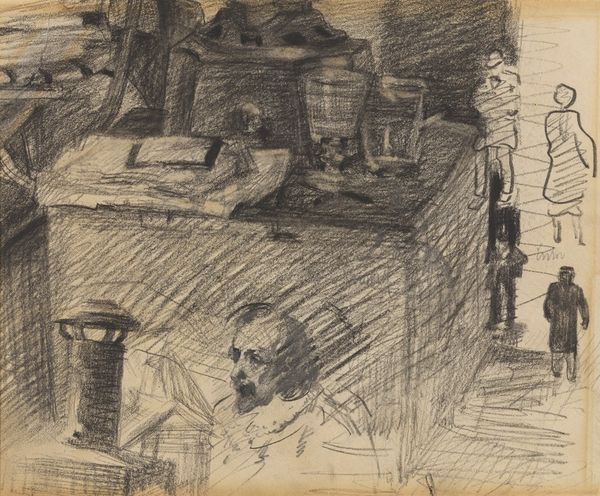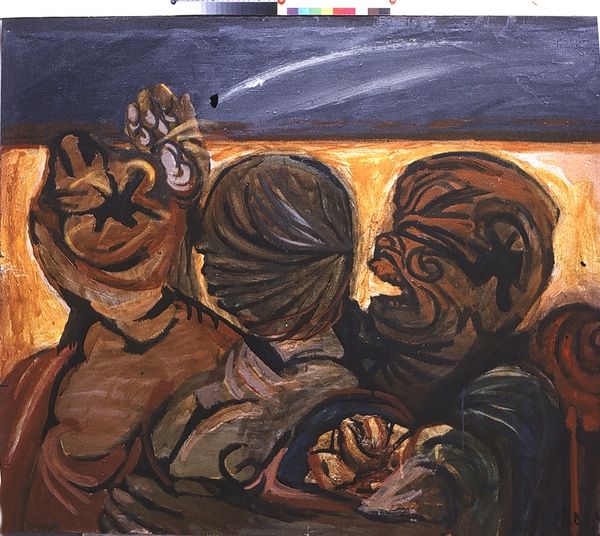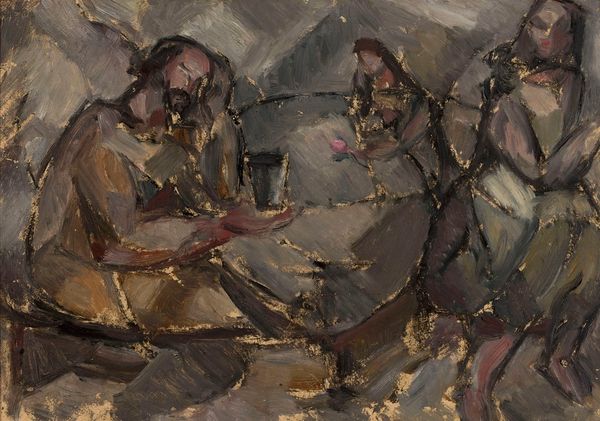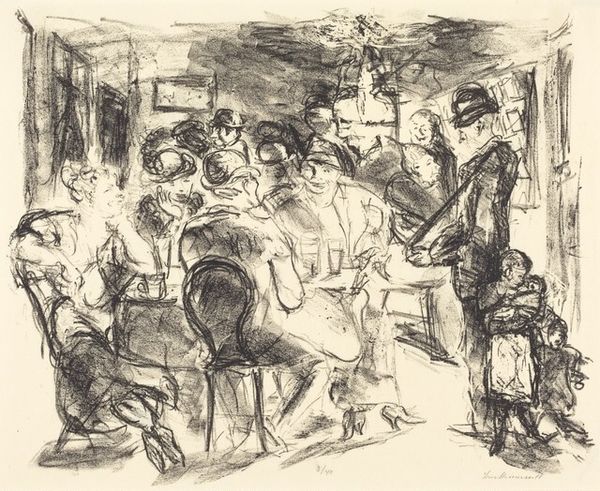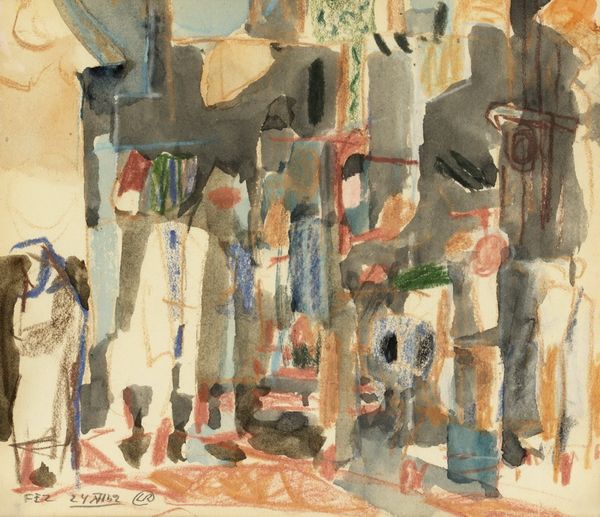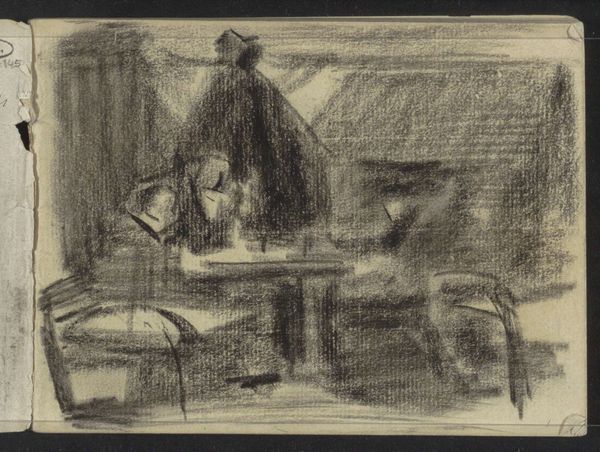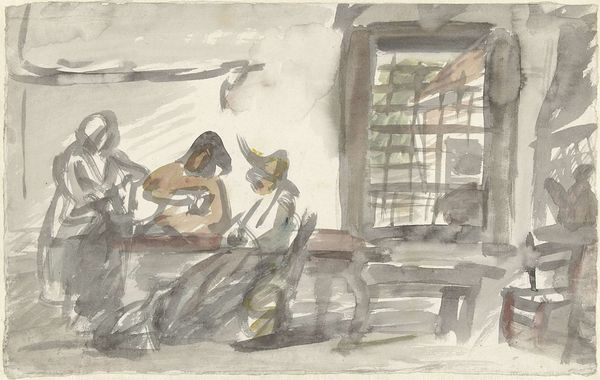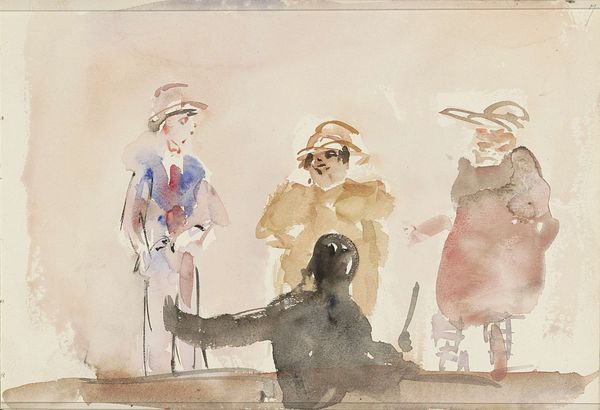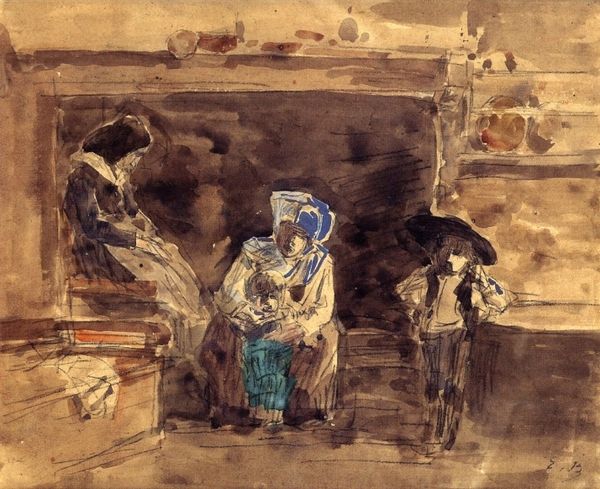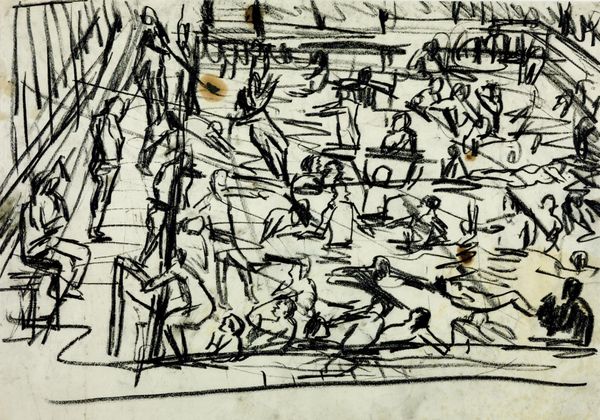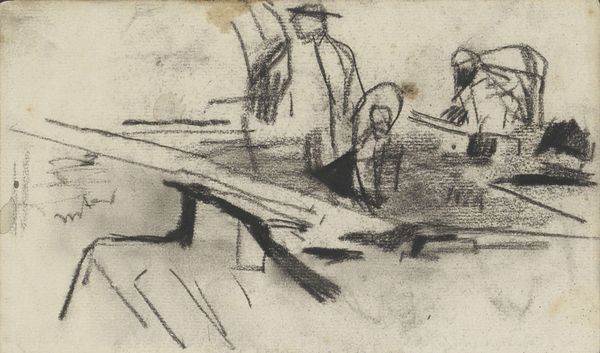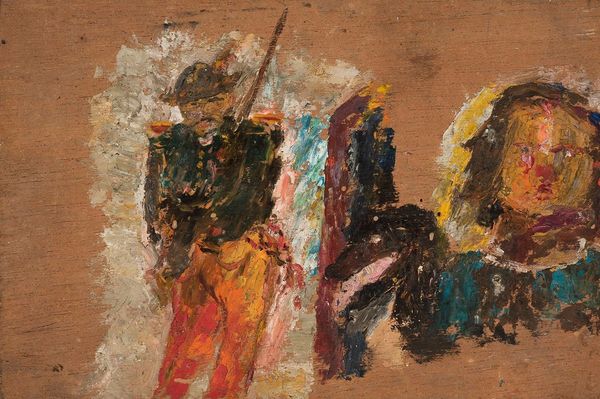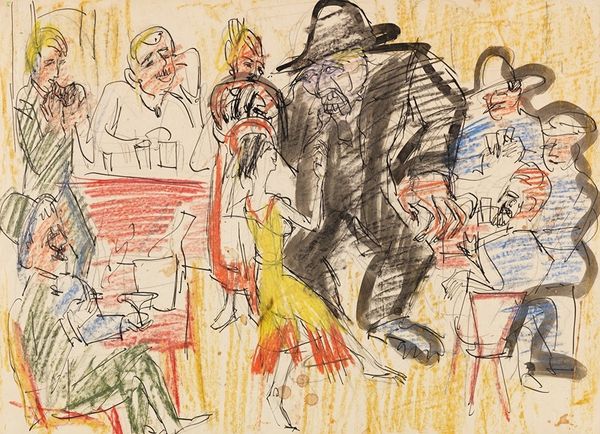
Copyright: Public Domain: Artvee
Curator: Cyprián Majerník created "Feast in front of the House" sometime in the 1940s, rendered with watercolors. A genre scene; what strikes you first? Editor: Well, formally speaking, the composition immediately suggests a kind of social performance. The figures are arranged laterally, almost staged, across the pictorial space. Curator: Right. Given that the 1940s in Europe was a period defined by war, we can explore themes of community, resilience, or perhaps even resistance through these acts of gathering. The "feast" becomes more than just a meal; it’s a statement. Editor: I see what you mean, but, considering Majerník's focus on flattened shapes and blurred forms, is he deliberately subverting clear, readable iconography? Is it meant to reflect fragmented experience through broken lines? Curator: Potentially, yes. It’s easy to impose narrative on artworks, but the power comes from understanding its potential as a site where the viewers negotiate the meaning and find their experience mirrored in it. These ordinary people acquire a powerful presence in relation to historical circumstance, no matter how loose the figuration. Editor: The limited color palette certainly reinforces that somber undertone. It feels intentional; a muting of celebration that serves a higher artistic purpose. It highlights form through restrained color play. Curator: Indeed. The context deepens that impact— knowing the turmoil happening as Majerník put brush to paper enriches the work. We can question traditional power structures that isolate entire segments of populations from resources. The very act of partaking in feast challenges power dynamics. Editor: This approach does reveal new depths that might be missed upon the initial viewing. It definitely complicates how one appreciates Majerník’s approach to art. Curator: Exactly! It moves beyond the beautiful watercolor and suggests something profoundly connected to how ordinary people push against their restricted, oppressive world. Editor: So, in looking at it from these positions we're able to better appreciate it as something layered in multiple histories, personal and political. Curator: I agree! Now it resonates beyond its medium, into stories that matter.
Comments
No comments
Be the first to comment and join the conversation on the ultimate creative platform.
